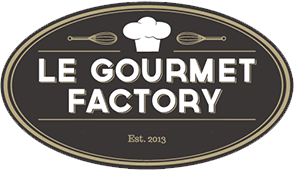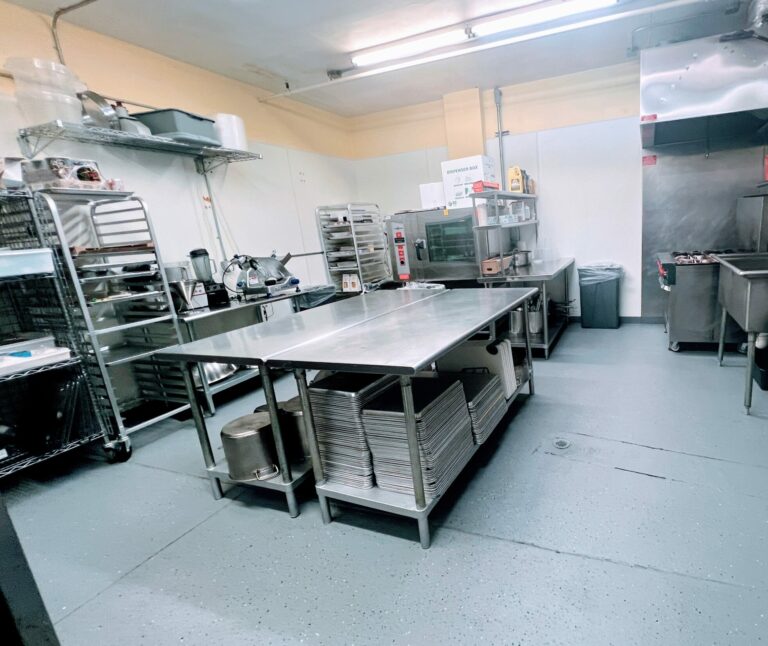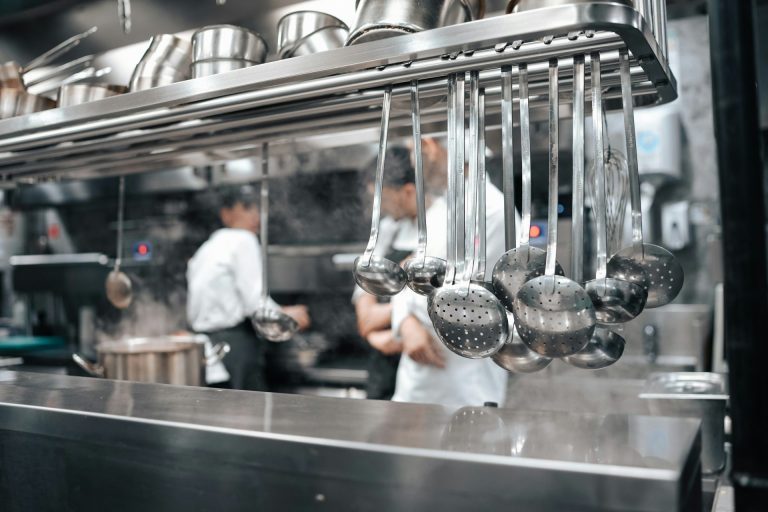Operating From a Ghost Kitchen: Expand Your Food Business
Ready to grow your food business? Learn how operating from a ghost kitchen helps caterers, bakers, and meal prep services scale efficiently.

Continue exploring the next articles in this series:
Learn effective strategies for managing operations in a ghost kitchen, from inventory control to streamlining workflows for a successful food…
Discover essential equipment and setup tips for ghost kitchens, from must-have appliances to layout strategies for efficient, high-quality production
Or navigate back to explore other related content :
Want to unlock new growth for your food business? Discover how ghost kitchens can transform your reach and profitability.
01: Introduction
For many food entrepreneurs, a home kitchen is where it all begins—whether it’s a small catering service, a baked goods business, or a meal prep service. But as orders grow and customer demand increases, so does the need for more space and professional equipment. Moving operations to a ghost kitchen is a practical solution that enables business growth while keeping costs manageable. Operating from a ghost kitchen provides the infrastructure needed to produce more efficiently, fulfill larger orders, and reach new customers without the overhead of a traditional restaurant.
In this guide, we’ll cover the essential considerations for running your food business from a ghost kitchen, including workflows, scaling, and maintaining a strong connection with your customers.
02: Why Transition to a Ghost Kitchen?
Home-based food businesses often reach a point where kitchen space and equipment become limiting factors. Ghost kitchens are an ideal next step, offering professional, commercial-grade environments where you can scale production. Popular types of food businesses that benefit from ghost kitchens include:
- Baked Goods and Desserts: Many bakers and dessert makers start at home but need more space and ovens to handle increasing orders. Ghost kitchens allow them to produce at scale without disrupting their home life.
- Catering Services: For small-scale caterers, ghost kitchens provide ample prep and storage space, enabling them to expand into larger events and corporate catering.
- Meal Prep and Delivery Services: Meal prep businesses often outgrow home kitchens quickly. A ghost kitchen allows these businesses to prepare meals more efficiently and ensures food safety compliance, which can be challenging in a home setup.
Transitioning to a ghost kitchen allows these businesses to meet growing demand while maintaining a delivery-based or pick-up model, keeping costs lower than a full restaurant setup.
03: Setting Up Efficient Workflows
Operating from a ghost kitchen requires a well-organized approach to maximize productivity and maintain quality. Since ghost kitchens are designed for delivery-only or pick-up operations, it’s essential to set up efficient workflows that support high-volume production.
- Organize Your Prep Stations: Set up distinct areas for food prep, cooking, and packaging. This setup minimizes confusion and helps your team work faster, especially during peak hours.
- Streamline Order Management: Use digital tools for order tracking and management. Many ghost kitchens integrate directly with delivery platforms, simplifying the process of accepting, preparing, and dispatching orders.
- Focus on Packaging: Since food prepared in ghost kitchens is primarily for delivery, packaging is crucial for maintaining food quality. Consider investing in eco-friendly and high-quality packaging that keeps food fresh during transit.
04: Maintaining Quality While Scaling Production
As you grow, maintaining the quality that attracted customers in the first place becomes a top priority. Here’s how to keep consistency high while expanding your output:
- Develop Standard Operating Procedures (SOPs): SOPs ensure that every dish meets the same standards, regardless of who’s preparing it. Detailed recipes, portion sizes, and cooking times should be documented for every menu item.
- Source Reliable Ingredients: Partner with suppliers who can meet your ingredient needs consistently. Reliable sourcing is especially important for businesses that focus on fresh or organic ingredients.
- Test New Equipment and Techniques: Ghost kitchens often come with commercial-grade appliances that may differ from what you’re used to. Take time to test these new tools to ensure they enhance your process without compromising quality.
05: Adapting Your Business to a Delivery-Only Model
For businesses accustomed to face-to-face customer interactions, operating from a ghost kitchen means rethinking how you connect with customers. As a delivery-based business, you’ll need strategies to keep customers engaged and ensure they have a positive experience, even without in-person interactions.
- Optimize Your Menu for Delivery: Not all dishes travel well, so it’s important to create or adapt a menu that maintains quality during delivery. For instance, items like baked goods, sandwiches, and meal prep items tend to hold up well, making them ideal choices for delivery-focused businesses.
- Leverage Social Media: Use social media platforms to showcase your dishes, tell your story, and engage with customers. Regularly posting about your menu, special promotions, and behind-the-scenes looks can help build a loyal customer base.
- Gather Customer Feedback: Encourage customers to leave reviews on your website or social media. Customer feedback not only builds credibility but also helps you understand areas for improvement in the delivery experience.
06: Scaling Up: Preparing for Growth and Expansion
Once you’re settled in a ghost kitchen, you may start to consider further expansion, whether it’s increasing production capacity, adding new menu items, or exploring multiple locations. Operating from a ghost kitchen is a scalable model that allows you to grow steadily.
- Consider Additional Time Slots or Locations: Many ghost kitchens offer flexible rental terms, allowing you to rent more hours or move into additional locations as your business grows. This flexibility makes it easier to increase output without making a big financial commitment.
- Expand Your Delivery Radius: Once you have a reliable production process, consider expanding your delivery area to reach new customers. Partnering with additional delivery services can help expand your reach while keeping delivery times reasonable.
- Experiment with Seasonal or Limited-Edition Offerings: To keep customer interest high, introduce seasonal menu items or limited-edition offerings. This approach not only keeps your menu fresh but also helps test customer interest in potential new products.
07: Conclusion
Operating from a ghost kitchen is a powerful way to grow your home-based food business, providing the professional space, equipment, and flexibility needed to scale effectively. Whether you’re expanding your baked goods operation, growing a catering service, or increasing production for a meal prep business, ghost kitchens offer a cost-effective solution for taking your business to the next level.
If you’re ready to explore how a ghost kitchen could support your food business goals, Contact Us at Le Gourmet Factory to discuss our flexible kitchen rental options. We’re here to help you find the ideal setup to continue building your brand and delivering exceptional food to your customers.
- FAQ
fREQUENTLY ASKED QUESTIONS
Why should I move my food business to a ghost kitchen?
Moving to a ghost kitchen allows you to scale up production with access to professional-grade equipment and more space. It’s a cost-effective solution for growing your business without the high overhead of a traditional restaurant.
What types of food businesses benefit most from ghost kitchens?
Many food businesses, including bakeries, catering services, and meal prep companies, thrive in ghost kitchens. They’re ideal for delivery-focused models, allowing you to reach more customers while maintaining quality.
How do I maintain quality as I increase production in a ghost kitchen?
Quality control starts with standardizing recipes, sourcing reliable ingredients, and establishing clear workflows. Ghost kitchens also provide consistent equipment, making it easier to produce at scale without compromising quality.
How can I keep customers engaged if I don’t have a dine-in space?
Use social media to connect with customers, post updates, and gather feedback. Additionally, focus on high-quality packaging that maintains food integrity during delivery, enhancing the customer experience.
What are some tips for scaling my business further from a ghost kitchen?
Consider expanding your delivery radius, experimenting with seasonal menu items, and increasing your kitchen hours or locations as demand grows. Ghost kitchens are flexible, allowing you to adjust quickly as your business evolves.
Continue exploring the next articles in this series:
Understand licensed kitchen requirements and regulations for ghost kitchens, from permits to safety standards, to ensure compliance for your food…
Learn effective strategies for managing operations in a ghost kitchen, from inventory control to streamlining workflows for a successful food…
Discover essential equipment and setup tips for ghost kitchens, from must-have appliances to layout strategies for efficient, high-quality production
Or navigate back to explore other related content :
Want to unlock new growth for your food business? Discover how ghost kitchens can transform your reach and profitability.
- 176A South Van Brunt Street Englewood, NJ 07631
Copyright © 2023 Le Gourmet Factory. All Rights Reserved. Website Design, SEO and Internet Marketing by Creative Click Media.




